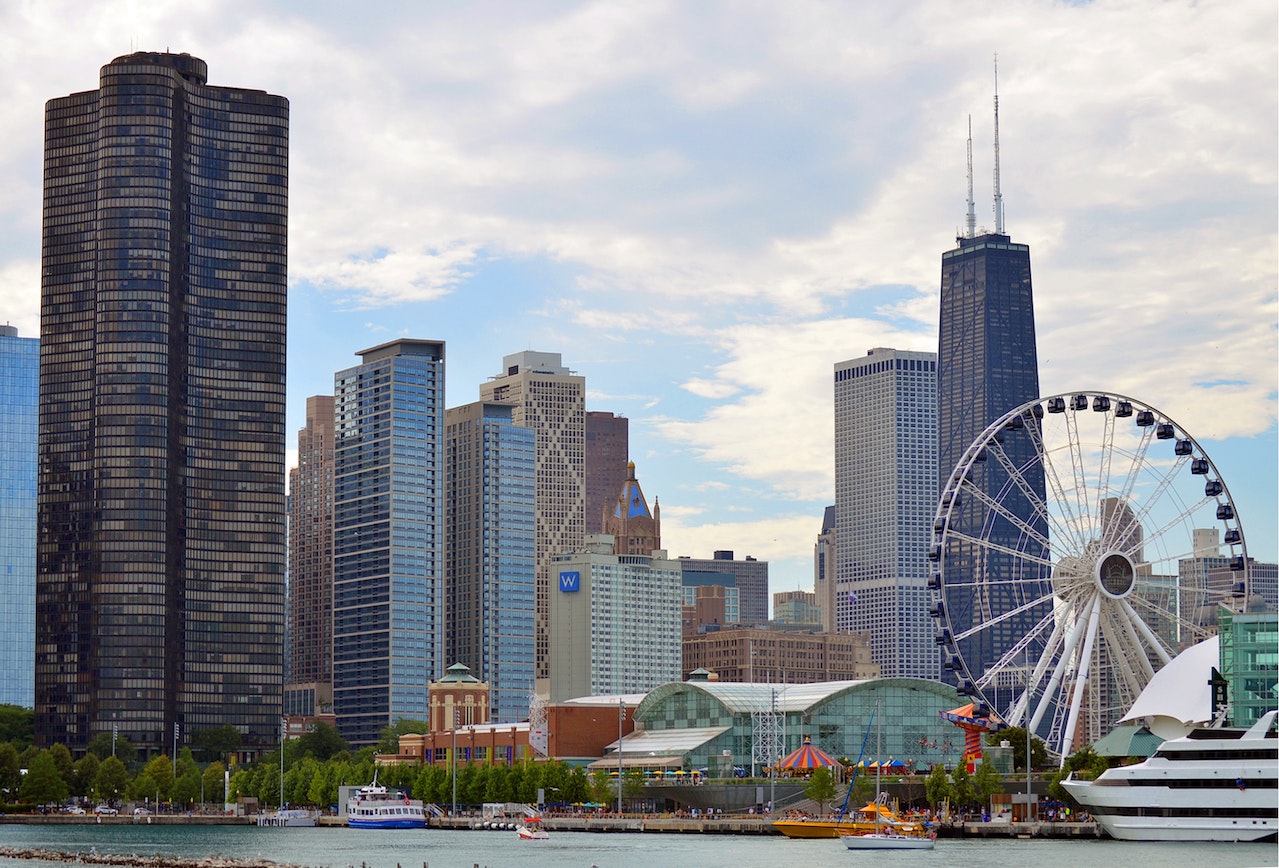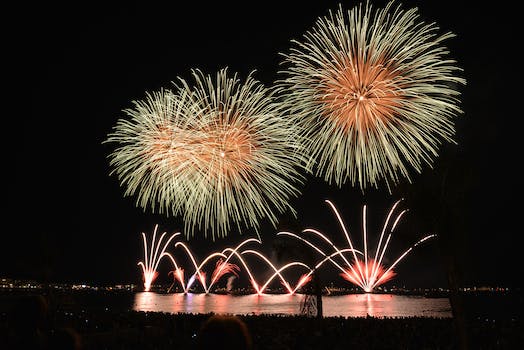Mayor Rahm Emanuel Announces Plan to Expand Bike Sharing Program
In May 2014, Mayor Rahm Emanuel announced a plan to expand the bike sharing program in Chicago. The program, which was launched in 2013, had already been successful in its first year, with over 1.7 million trips taken on the bikes. The expansion would add 175 new stations and 1,750 bikes to the existing network, making it one of the largest bike sharing programs in the country.
The announcement was made at a press conference held at the Divvy headquarters in Chicago. Mayor Emanuel was joined by officials from the Chicago Department of Transportation and representatives from Divvy. The mayor spoke about the success of the program in its first year and the benefits it had brought to the city.
The bike sharing program had not only provided a new mode of transportation for residents and visitors, but it had also helped to reduce traffic congestion and improve air quality. The mayor emphasized the importance of continuing to invest in sustainable transportation options and making the city more bike-friendly.
The expansion of the program would be funded through a combination of public and private funds. The city would provide $3 million in funding, while Divvy would contribute $6 million. The remaining funds would come from federal grants and private donations.
The new stations would be located in neighborhoods throughout the city, including areas that had previously been underserved by the program. The expansion would also include the addition of new bike lanes and other infrastructure improvements to make biking safer and more accessible.
The announcement was met with enthusiasm from residents and community leaders. Many saw the expansion of the bike sharing program as a positive step towards a more sustainable and equitable transportation system in the city.
However, there were also concerns raised about the cost of the program and whether it would truly benefit all residents. Some argued that the expansion should focus on areas with the greatest need, such as low-income neighborhoods and communities of color.
Despite these concerns, the expansion of the bike sharing program moved forward. The new stations and bikes were gradually rolled out over the following months, with the final additions completed in 2015.
Today, the bike sharing program in Chicago continues to be a popular and successful mode of transportation. It has expanded to include over 600 stations and 6,000 bikes, with over 15 million trips taken since its launch in 2013.
The program has also inspired other cities across the country to invest in bike sharing and other sustainable transportation options. It has become a model for how cities can work towards a more sustainable and equitable future.
Looking back on the announcement made by Mayor Emanuel in May 2014, it is clear that the expansion of the bike sharing program was a significant moment in the city’s history. It represented a commitment to sustainable transportation and a vision for a more bike-friendly city. Today, that vision continues to be realized, as Chicagoans embrace biking as a viable and enjoyable way to get around the city.
Chicago Cubs Win 8 Straight Games
In May 2014, the Chicago Cubs made headlines by winning eight straight games. This impressive feat was a welcome change for the team, which had been struggling in previous seasons.
The Cubs’ winning streak began on May 4th, when they defeated the St. Louis Cardinals 4-0. The team’s starting pitcher, Jason Hammel, threw seven shutout innings and struck out six batters. The Cubs’ offense was led by first baseman Anthony Rizzo, who hit a home run in the first inning.
The following day, the Cubs faced the Cardinals again and won 4-3 in extra innings. The game was tied 3-3 in the 12th inning when Cubs outfielder Junior Lake hit a walk-off home run to secure the victory.
The Cubs continued their winning ways by sweeping a three-game series against the crosstown rival Chicago White Sox. In the first game of the series, Cubs pitcher Travis Wood threw seven shutout innings and struck out six batters. The Cubs’ offense was led by second baseman Darwin Barney, who hit a home run in the second inning.
In the second game of the series, the Cubs won 12-5 thanks to a strong offensive performance. Outfielder Nate Schierholtz hit a grand slam in the first inning, and the Cubs scored six runs in the fourth inning to put the game out of reach.
The Cubs completed the sweep of the White Sox with a 3-1 victory in the final game of the series. Starting pitcher Jake Arrieta threw seven innings and allowed only one run, while Rizzo hit a home run in the sixth inning to give the Cubs the lead.
After the sweep of the White Sox, the Cubs traveled to Atlanta to face the Braves. The Cubs won the first game of the series 5-2, with Hammel once again pitching well and Rizzo hitting another home run.
In the second game of the series, the Cubs won 2-0 thanks to a strong pitching performance by Wood. Wood threw seven shutout innings and struck out eight batters, while Rizzo and outfielder Ryan Kalish each drove in a run.
The Cubs completed their eight-game winning streak with a 5-2 victory over the Braves in the final game of the series. Starting pitcher Edwin Jackson threw six innings and allowed only one run, while Rizzo hit his third home run of the streak.
The Cubs’ winning streak was a sign of hope for the team and its fans. After years of struggling, the Cubs appeared to be turning a corner and building a competitive team. While the team ultimately finished the season with a losing record, the eight-game winning streak was a bright spot in an otherwise disappointing season.
Overall, May 2014 was a memorable month for the Chicago Cubs and their fans. The team’s eight-game winning streak was a sign of progress and a glimpse of what was to come in the years ahead. While the Cubs would face more challenges in the seasons to come, the winning streak was a reminder that anything is possible in baseball.
Protests Erupt Following Police Shooting of 17-Year-Old Laquan McDonald
In May 2014, the city of Chicago was rocked by protests following the police shooting of 17-year-old Laquan McDonald. The incident occurred on October 20, 2014, but it wasn’t until November 24, 2015, that the dashcam video of the shooting was released to the public. The video showed Officer Jason Van Dyke shooting McDonald 16 times as he walked away from the police.
The release of the video sparked outrage and protests across the city. People took to the streets to demand justice for McDonald and to call for police reform. The protests were largely peaceful, but there were some instances of violence and property damage.
The shooting of McDonald was not an isolated incident. It was part of a larger pattern of police violence and misconduct in Chicago. The city had a long history of police brutality, particularly against people of color. The release of the video of McDonald’s shooting brought this issue to the forefront of public consciousness and sparked a national conversation about police reform.
The protests in Chicago were part of a larger movement for police reform that was taking place across the country. In the wake of the shooting of Michael Brown in Ferguson, Missouri, and the subsequent protests, there was a growing awareness of the need for police reform. The protests in Chicago were a continuation of this movement and helped to bring attention to the issue of police violence and misconduct in the city.
The protests in Chicago were not just about the shooting of Laquan McDonald. They were also about the larger issue of police accountability. The protesters demanded that the officers involved in the shooting be held accountable for their actions and that the city take steps to reform the police department. They called for an end to the “code of silence” that protected police officers who engaged in misconduct and for greater transparency and accountability in the police department.
The protests in Chicago were met with a mixed response from city officials. Some officials, including Mayor Rahm Emanuel, initially defended the police department and downplayed the significance of the shooting. Others, including Cook County State’s Attorney Anita Alvarez, were criticized for their handling of the case and their failure to hold the officers involved accountable.
In the months and years following the protests, there were some positive developments in the fight for police reform in Chicago. In 2016, the city reached a settlement with the McDonald family, agreeing to pay them $5 million in damages. In 2017, Officer Van Dyke was convicted of second-degree murder and 16 counts of aggravated battery with a firearm. He was sentenced to 81 months in prison.
Despite these developments, however, there is still much work to be done to reform the police department in Chicago. The city has a long history of police violence and misconduct, and it will take sustained effort and commitment to bring about meaningful change. The protests in May 2014 were an important moment in this ongoing struggle, and they helped to bring attention to the issue of police reform not just in Chicago, but across the country.
Chicago Blackhawks Win Stanley Cup Championship
In May 2014, the city of Chicago was buzzing with excitement as the Chicago Blackhawks won the Stanley Cup Championship. The Blackhawks had a strong season, finishing with a record of 46-21-15 and earning the top seed in the Western Conference playoffs.
The team faced tough competition throughout the playoffs, but they were able to overcome their opponents and make it to the Stanley Cup Finals. In the Finals, they faced off against the Tampa Bay Lightning, a team that had surprised many by making it to the Finals in just their second year of existence.
The series was closely contested, with both teams trading wins back and forth. However, the Blackhawks were able to win the crucial Game 5 on the road, giving them a 3-2 series lead and putting them one win away from the championship.
In Game 6, the Blackhawks came out firing on all cylinders, scoring two quick goals in the first period to take a commanding lead. The Lightning fought back, scoring a goal in the second period to cut the lead to one, but the Blackhawks were able to hold on and win the game 2-1, clinching their third Stanley Cup Championship in six years.
The city of Chicago erupted in celebration, with fans flooding the streets to cheer on their beloved Blackhawks. The team held a victory parade through the city, with thousands of fans lining the streets to show their support.
The Blackhawks’ victory was a testament to their skill and determination, as well as the support of their fans. The team had faced adversity throughout the season, including injuries to key players and tough losses, but they never gave up and continued to fight until the end.
The victory also cemented the Blackhawks’ place as one of the top teams in the NHL. With three championships in six years, they had established themselves as a dynasty and a force to be reckoned with in the league.
Overall, the Blackhawks’ victory in May 2014 was a momentous occasion for the city of Chicago and for hockey fans everywhere. It was a reminder of the power of perseverance and the importance of teamwork, and it will be remembered for years to come as one of the greatest moments in the history of the sport.
Chicago Launches New Program to Combat Gun Violence
In May 2014, the city of Chicago launched a new program aimed at combating gun violence. The program, called the Violence Reduction Strategy, was developed in response to the city’s high rates of gun violence, which had been a persistent problem for many years.
The Violence Reduction Strategy was designed to be a comprehensive approach to reducing gun violence in Chicago. It included a number of different initiatives, such as increased police presence in high-crime areas, expanded community outreach programs, and increased funding for social services.
One of the key components of the Violence Reduction Strategy was the creation of a new unit within the Chicago Police Department called the Strategic Decision Support Centers (SDSCs). These centers were designed to be high-tech command centers that would allow police officers to monitor crime in real-time and respond quickly to incidents as they occurred.
The SDSCs were equipped with state-of-the-art technology, including high-definition cameras, gunshot detection systems, and advanced analytics software. This technology allowed police officers to quickly identify and respond to incidents of gun violence, and to track down suspects more effectively.
In addition to the SDSCs, the Violence Reduction Strategy also included a number of community outreach programs. These programs were designed to build trust between the police and the community, and to provide support and resources to individuals and families affected by gun violence.
One of the most successful community outreach programs was the CeaseFire program, which was run by the Chicago-based organization Cure Violence. The CeaseFire program employed a unique approach to reducing gun violence, which involved using trained mediators to intervene in conflicts before they escalated into violence.
The CeaseFire program was highly effective at reducing gun violence in Chicago. In fact, a study conducted by the University of Illinois at Chicago found that neighborhoods where the CeaseFire program was implemented saw a 16% reduction in shootings compared to neighborhoods where the program was not implemented.
Overall, the Violence Reduction Strategy was a significant step forward in the city’s efforts to combat gun violence. While the program faced some criticism from community activists who felt that it did not go far enough in addressing the root causes of gun violence, it was generally seen as a positive development by most residents of the city.
In the years since the launch of the Violence Reduction Strategy, Chicago has continued to make progress in reducing gun violence. While the city still faces significant challenges in this area, the success of programs like the CeaseFire program and the Strategic Decision Support Centers have shown that there are effective strategies for reducing gun violence in urban areas.
As Chicago continues to grapple with the issue of gun violence, it is clear that a comprehensive approach that includes both law enforcement and community outreach programs will be necessary to make lasting progress. While there is no easy solution to this complex problem, the Violence Reduction Strategy has shown that progress is possible when communities come together to address this critical issue.
Conclusion
In May 2014, Chicago experienced a surge in gun violence, with over 40 people shot and 10 killed in a single weekend. The violence was attributed to gang activity and drug-related conflicts. The city implemented various measures to address the issue, including increased police presence and community outreach programs. Despite these efforts, gun violence continued to be a major issue in Chicago in the following years.
0




